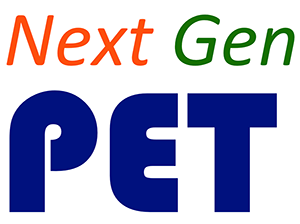Teaching & Learning — Module IF Cluster
Click on the activity titles below to view or download the activities in PDF format. The extensions below can be found on the Teaching & Learning Extensions page
Each Teaching and Learning activity and extension in the Module IF (Interactions and Forces) cluster is listed below, along with a brief summary, the NGSS alignment, estimated class time needed (for activities) and the format (for extensions), and the pre-requisite TL lessons (if any). Below each description is a suggestion for when you should conduct the in-class activity or assign the extension. There is a list of the NGSS science and engineering practices and the crosscutting concepts following the table.
Note that Extension I is a group project involving working with children. This project typically takes 2-3 weeks from initial assignment to the time the final individual and group reports are turned in. Although the physical science content (forces on a parachute) is associated with Unit CF, by the time students are done with the project, the class will (probably) be on a different unit. Thus, the follow-up Activity 6, where students reflect on their interactions with the children they interviewed, will not be connected to your current unit.
| Title | NPG Modules | NGSS Practices * | NGSS CC # | Time or Format | Pre-req | |
|---|---|---|---|---|---|---|
| Ext H | Facilitating Investigations - Prep for Activity 5 | IF | 3 | Paper | - | |
| Next Gen PET students analyze a video in which children conduct experiments to assess how three variables affect parachute speed, paying attention to the student and teacher actions. This is reflected on in TL A5 and Next Gen PET students facilitate a similar lesson in Ext I. This extension also includes the table of grade level competencies for carrying out investigations. | ||||||
| Assign :Before TL A5. Either after or concurrently with Unit CF Ext D (assigned after UCF A4). | ||||||
| A5 | Planning and Carrying Out Investigations (NGSS Practice 3) | IF | 3 | 20 min | Ext H | |
| Introduces students to NGSS Practice 3 (planning and carrying out investigations). Next Gen PET students reflect on a video they watched in Ext H where children tested three variables related to the design of a parachute. They identify how the children engaged in the practice. They also consider their role (as students) and their instructor’s role in conducting investigations in Next Gen PET. This activity also models a lesson they will teach in Ext I. | ||||||
| In class : After students complete Unit CF Ext D (which is assigned after UCF A4) and TL Ext H. | ||||||
| Ext I | Forces, Friction, and Facilitating Investigations | IF | 1,3,4,6 | Child Interview | Ext C, A5 | |
| Next Gen PET students interview children about their ideas about designing investigations in the context of a challenge to design a better parachute. The Next Gen PET students guide the children in developing testable questions and then on deciding how to test their question. They collaborate with group members to write a report synthesizing their interview results. | ||||||
| Assign : After TL Ext C, TL A5, Unit CF A4 and Unit FM A6 (focusing on the gravitational force). | ||||||
| Ext J | Common Ideas about Force and Motion | IF | Reading | - | ||
| Short reading about common ideas that children and adults have about force and motion. | ||||||
| Assign : After Unit CF A2. | ||||||
| A6 | Facilitating Investigations (NGSS Practice 3) | IF | 1,3,4 | 45 min | Ext I | |
| In class discussion and reflection on the interviews with children that the Next Gen PET students conducted as part of Ext I. Students then look at NGSS Practices 1, 3, and 4 (asking questions, planning and carrying out investigations, analyzing and interpreting data) and reflect on where their own instruction in Ext I fell on the learner directed/teacher directed continuum in the context of these practices. Finally, they consider how the parachute activity helped develop children’s understanding of scientific content. | ||||||
| Assign : After students complete all reports associated with Ext I children’s interview task. | ||||||
* NGSS Science and Engineering Practices
- Asking questions (for science) and defining problems (for engineering).
- Developing and using models.
- Planning and carrying out investigations.
- Analyzing and interpreting data.
- Using mathematics and computational thinking.
- Constructing explanations (for science) and designing solutions (for engineering).
- Engaging in argument from evidence.
- Obtaining, evaluating, and communicating
# NGSS Crosscutting Concepts
- Patterns
- Cause and effect: Mechanism and explanation,
- Scale, proportion, and quantity,
- Systems and system models,
- Energy and matter: Flows, cycles, and conservation
- Structure and function, and
- Stability and change.




